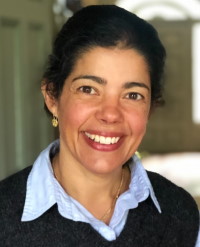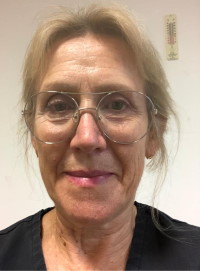Elina Tripoliti and Jacqueline McIntosh are speech therapists who have worked with Alex Irvine at the National Hospital in London and the Wolfson Rehabilitation Centre in Wimbledon. They have collaborated to bring us a three part article entitled: Speech, Swallowing and Neuroacanthocytosis (NA).
Part 1: Working on speech intelligibility throughout the disease process
 Speech difficulties following a diagnosis of NA can be very diverse and change over time as they follow the spectrum of the disease's continuation. Speech can be one of the first symptoms of the disease with unpredictable and uncontrolled orofacial movements interfering with clarity and flow of speech.
Speech difficulties following a diagnosis of NA can be very diverse and change over time as they follow the spectrum of the disease's continuation. Speech can be one of the first symptoms of the disease with unpredictable and uncontrolled orofacial movements interfering with clarity and flow of speech.
Maintaining the ability to communicate needs, wishes, life stories and hopes, when one is faced with a chronic disease should be a priority in healthcare. Due to the complex nature of symptoms, their changing nature throughout the disease progression and the side effects of medication, it is paramount to work within a Multidisciplinary Team and with family and friends.
The first signs of NA can be involuntary vocalisations, grunts, clicks and lingual dystonia (unpredictable tongue protrusion both at rest and during speech/swallowing). The unpredictable nature of these movements can affect the “melody” of speech as well as the articulation. Voice can become quieter, or with sudden bursts of loudness. Working directly on controlling these movements can prove counterproductive due to the effect of fatigue and the dystonia itself. Instead one should be encouraged to explore “tricks” that outwit the system, for example holding the tongue in certain position, or holding a finger on the cheek. Speech can remain intelligible, and the priority at this early stage should be to maintain a healthy and loud voice and to encourage communication and self -expression in a holistic way, not just through speech (singing or poetry).
 Managing swallowing problems is often another priority at these early stages. Tongue protrusion can interfere with the oral stage of swallowing, and food can escape from the mouth. The time one needs to complete a meal, as well as the enjoyment from eating out with friends is affected. Management of swallowing problems can include pharmacological approaches (botox- with variable results depending on the type of lingual dystonia) and behavioural/compensatory strategies (maintaining safe eating and drinking strategies).
Managing swallowing problems is often another priority at these early stages. Tongue protrusion can interfere with the oral stage of swallowing, and food can escape from the mouth. The time one needs to complete a meal, as well as the enjoyment from eating out with friends is affected. Management of swallowing problems can include pharmacological approaches (botox- with variable results depending on the type of lingual dystonia) and behavioural/compensatory strategies (maintaining safe eating and drinking strategies).
I met Alex a couple of years ago, when she came in my Speech-Movement Disorders clinic at the National Hospital, approximately 22 years after her diagnosis. Her speech was hardly audible with indistinct articulation, low volume and very reduced amplitude of lips and tongue movements. Nevertheless, she was a good communicator, through her eyes, subtle changes of facial expression and the use of a Talking Machine.
We set out working online with the aim of restoring her speech to a useful, functional way of communicating. It was made very loud and clear, even through the occasionally patchy online sessions, that phrases such as “I need a cup of tea” or “When is lunch” were not very motivating for speech work, especially when other factors such as fatigue can interfere with the ability to speak. We decided to tackle speech in a more “organised” way, to have fun exploring sounds and to purposefully train muscles responsible for voice and articulation.
There are challenges to provide specific exercises for the patient's exact threshold levels so as not to increase involuntary movement and negate the benefit of training. One is targeting more than one area of motor speech at the same time, i.e. vocal loudness and clarity of articulation, or reading and melody (as in questions), without triggering involuntary movements of the eyes, mouth, tongue.
Recording and playing back speech can be useful but not always welcome. The most direct way is through conversation. In our sessions Alex prepares sentences based on words beginning with specific sounds. We started with the t/d sounds, then moved to k/g and then the harder ones for Alex (due to her reduced lip closure), the sounds p/b. I have to write them down to show my understanding and to correct any mistakes.
In time, the sentences became very unpredictable and imaginative, our sessions more demanding on my listening skills and Alex’s clarity of articulation (see for example the /f/ sentence: “Four famous fishermen found four flounders (flippers flapping furiously) faithfully following four floppy female flat-fish”. The weekly sessions allowed us to build on other ways of controlling speech breakdown, especially for p/b sounds. For example, conscious control of lip closure (i.e. for the first and third sound in the word “Bobby”) can be challenging, not due to weakness but due to difficulty in initiating this particular movement for speech, even though the same movement is easily performed for drinking or eating. Drinking water through a straw brings the lips together and “reminds” the system of the initial movement for the sound /b/. And that’s how “the pink boat parked perfectly in pirate base”.
There are always new targets depending on where each session takes us. Allowing for the effect of fatigue and being aware of side effects of medication is paramount in every session. Mostly though, our way of working evolved from a shared responsibility for the outcome of every session, as it is for the outcome of any conversation. And thus, we “take our cake to the Tate”.
PHOTO CREDIT: Elina Tripoliti (r) and Jacqueline McIntosh (l)